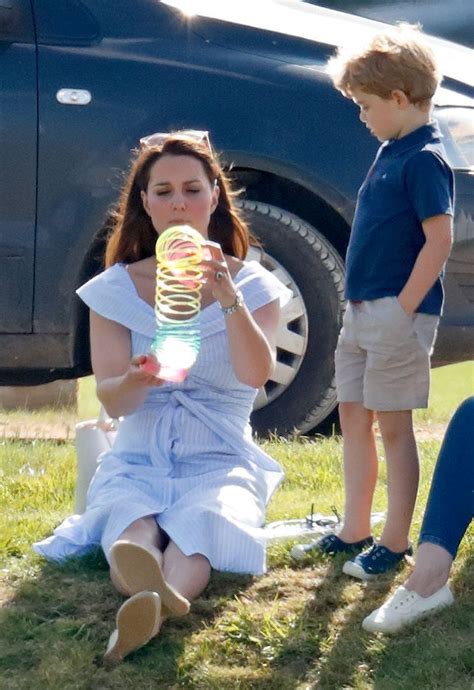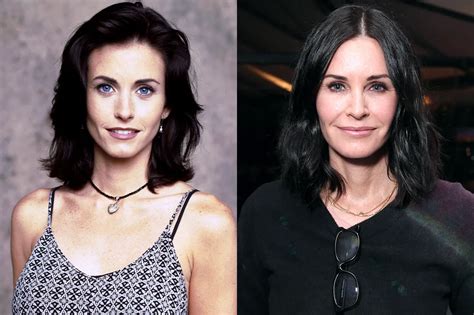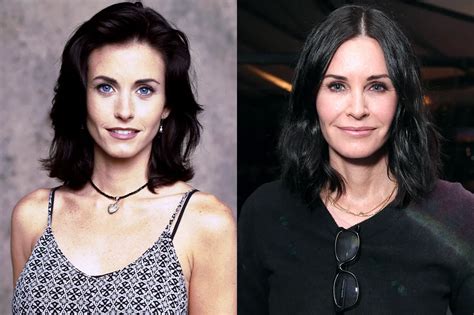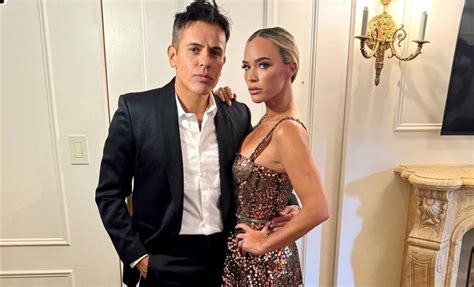
Princess Charlotte’s subtle jewelry choices at Trooping the Colour 2024 drew considerable attention, mirroring her mother Princess Kate’s penchant for understated elegance and signifying a poignant continuity in royal style.
Princess Charlotte, attending Trooping the Colour alongside her parents, Prince William and Princess Kate, and her brothers, Prince George and Prince Louis, subtly honored her mother through her choice of accessories. The young princess, known for her poised demeanor, sported a delicate bow pin on her dress, sparking conversations about its potential significance and its alignment with Princess Kate’s classic fashion sensibilities. The event marked Princess Kate’s first public appearance since her cancer diagnosis, making the occasion particularly meaningful for royal observers.
The focus on Princess Charlotte’s jewelry highlights the increasing attention she receives as a prominent member of the royal family. Royal fashion enthusiasts quickly noted the similarity between Charlotte’s accessory and Kate’s established style, interpreting it as a touching tribute amid the Princess of Wales’s ongoing health challenges. The young royal’s fashion choices often reflect a blend of youthful charm and regal sophistication, and this latest appearance was no exception. The bow pin, simple yet elegant, added a layer of depth to her overall appearance, resonating with royal watchers who appreciate the symbolism often embedded in royal attire.
“Sure, Princess Charlotte twinned with her mother in a white dress. But her bow brooch was the real scene-stealer,” as noted by Yahoo Entertainment. The coordinated outfits between mother and daughter underscored a unified front, projecting an image of familial strength and support during a challenging period. The bow pin, in particular, served as a focal point, drawing the eye and prompting speculation about its origins and intended message.
Princess Kate, who has been undergoing preventative chemotherapy, made a notable return to public duties at the event. Her presence was widely celebrated, with many expressing admiration for her resilience and grace. The coordinated appearance with Princess Charlotte further amplified the sentiment of solidarity within the royal family.
Fashion analysts have long observed Princess Kate’s influence on royal style, and Princess Charlotte’s emerging fashion sense seems to be following a similar trajectory. The young princess has often been seen wearing outfits that complement her mother’s, demonstrating a clear awareness of royal fashion protocols and an appreciation for classic designs. This latest appearance reinforces the idea that Princess Charlotte is not only growing into her role as a royal but also embracing the fashion legacy of her mother.
The Trooping the Colour event, a traditional celebration of the monarch’s official birthday, provided the perfect backdrop for this sartorial display. The annual parade is a significant event in the royal calendar, attracting global attention and offering a platform for the royal family to showcase unity and tradition. Princess Charlotte’s participation, along with her siblings, underscored the continuity of the monarchy and the importance of family bonds.
Delving Deeper into Princess Charlotte’s Bow Pin
The bow pin worn by Princess Charlotte is more than just a decorative accessory; it carries symbolic weight, resonating with themes of unity, respect, and familial affection. Bows, historically, have been associated with connection and unity, symbolizing the tying together of different elements. In the context of Princess Charlotte’s appearance, the bow can be interpreted as a symbol of solidarity with her mother, Princess Kate, during her health challenges.
Fashion historians suggest that the choice of a bow pin also reflects a broader trend in royal fashion, where accessories are often used to convey subtle messages. Queen Elizabeth II, for instance, was known for using her brooches to communicate diplomatic messages and express personal sentiments. Princess Kate has also adopted this practice, often selecting jewelry with particular significance for specific occasions.
The material and design of the bow pin could also provide additional insights into its meaning. If the pin is made of a precious metal, such as gold or platinum, it could signify the enduring strength and resilience of the royal family. If it incorporates specific gemstones or colors, these elements could carry further symbolic weight, reflecting themes of hope, healing, or remembrance.
Royal watchers have also speculated about the origins of the bow pin. Some suggest that it could be a family heirloom, passed down through generations of royal women. Others believe that it may have been a gift to Princess Charlotte from her mother, symbolizing their close bond. Regardless of its origins, the bow pin has undoubtedly captured the attention of royal enthusiasts, prompting a deeper exploration of its potential meanings.
Princess Kate’s Influence on Royal Fashion
Princess Kate has become a global fashion icon, known for her elegant style and her ability to blend classic designs with contemporary trends. Her fashion choices often reflect a deep understanding of royal protocols, while also showcasing her personal taste and individuality. Princess Kate’s influence extends beyond her own wardrobe, shaping the fashion preferences of royal fans and inspiring designers around the world.
One of the defining characteristics of Princess Kate’s style is her emphasis on understated elegance. She often opts for simple, well-tailored outfits in classic colors, accessorizing with delicate jewelry and sophisticated handbags. This approach allows her to maintain a polished and refined appearance, while also avoiding ostentation or extravagance.
Princess Kate’s influence on royal fashion can also be seen in her ability to revive traditional styles. She has often been spotted wearing vintage pieces or designs inspired by historical royal attire, demonstrating a respect for the heritage of the monarchy. This approach not only adds depth and meaning to her fashion choices but also helps to preserve and promote traditional craftsmanship.
The “Kate effect” is a well-documented phenomenon, referring to the surge in demand for items worn by the Princess of Wales. Whenever Princess Kate is seen wearing a particular dress, handbag, or piece of jewelry, it often sells out within hours, demonstrating her significant influence on consumer behavior. This effect highlights the power of royal fashion to shape trends and drive sales, making Princess Kate a valuable asset to the fashion industry.
The Significance of Trooping the Colour
Trooping the Colour is an annual military parade held in London to celebrate the official birthday of the British monarch. The event dates back to the 17th century and has become a symbol of British tradition and royal pageantry. Trooping the Colour involves over 1,400 parading soldiers, 200 horses, and 400 musicians, making it one of the largest and most elaborate military displays in the world.
The ceremony takes place at Horse Guards Parade in Whitehall, London, and is attended by members of the royal family, government officials, and distinguished guests. The parade begins with the inspection of the troops by the monarch, followed by a series of intricate military maneuvers and musical performances. The highlight of the event is the “trooping” of the regimental flag, or “colour,” which is carried down the ranks of soldiers.
Trooping the Colour serves several important functions. It is a celebration of the monarch’s official birthday, providing an opportunity for the public to express their loyalty and admiration. It is also a demonstration of the professionalism and discipline of the British armed forces. Additionally, Trooping the Colour serves as a symbol of national unity and tradition, bringing together people from all walks of life to celebrate British heritage.
The event also provides an opportunity for the royal family to showcase unity and solidarity. The appearance of Princess Kate at Trooping the Colour 2024, following her cancer diagnosis, was particularly significant, demonstrating her resilience and commitment to her royal duties. The coordinated outfits between Princess Kate and Princess Charlotte further amplified this sentiment, projecting an image of familial strength and support.
The Royal Family and Public Image
The British royal family has long been subject to intense public scrutiny, with every aspect of their lives, from their fashion choices to their personal relationships, closely monitored by the media. The royal family’s public image is carefully managed, as it plays a crucial role in maintaining the stability and legitimacy of the monarchy.
The royal family uses a variety of strategies to shape their public image, including carefully selecting events to attend, engaging with charitable causes, and communicating through official channels. Fashion choices are also an important tool for shaping public perception, as they can convey messages of tradition, modernity, and social awareness.
The relationship between the royal family and the media is complex and often fraught with tension. While the media plays a crucial role in informing the public about the activities of the royal family, it can also be intrusive and sensationalistic. The royal family must carefully balance the need for transparency with the desire for privacy, navigating the media landscape with skill and diplomacy.
In recent years, the royal family has faced a number of challenges to its public image, including controversies surrounding Prince Andrew’s involvement with Jeffrey Epstein and the departure of Prince Harry and Meghan Markle from their roles as senior royals. These events have prompted a period of reflection and reform within the royal family, as they seek to adapt to changing social attitudes and maintain their relevance in the 21st century.
Frequently Asked Questions (FAQ)
-
What was the significance of Princess Charlotte’s jewelry at Trooping the Colour 2024?
Princess Charlotte’s bow pin was seen as a subtle tribute to her mother, Princess Kate, mirroring her mother’s classic style and potentially symbolizing solidarity during Kate’s health challenges. As noted by Yahoo Entertainment, “Sure, Princess Charlotte twinned with her mother in a white dress. But her bow brooch was the real scene-stealer.” The coordinated outfits reinforced a unified front.
-
Why was Princess Kate’s presence at Trooping the Colour 2024 particularly noteworthy?
Princess Kate’s appearance marked her first public engagement since her cancer diagnosis and subsequent preventative chemotherapy. Her presence was widely celebrated as a symbol of her resilience and commitment to her royal duties.
-
What is Trooping the Colour, and why is it important?
Trooping the Colour is an annual military parade held in London to celebrate the official birthday of the British monarch. It is a significant event that showcases British tradition, military discipline, and national unity. The event dates back to the 17th century and involves over 1,400 parading soldiers, 200 horses, and 400 musicians.
-
How has Princess Kate influenced royal fashion, and what is the “Kate effect”?
Princess Kate is a global fashion icon known for her elegant and understated style. The “Kate effect” refers to the surge in demand for items worn by the Princess of Wales, often leading to rapid sell-outs and demonstrating her significant influence on consumer behavior and fashion trends.
-
What challenges has the royal family faced in maintaining its public image in recent years?
The royal family has faced challenges, including controversies surrounding Prince Andrew and the departure of Prince Harry and Meghan Markle. These events have prompted reflection and reform within the royal family as they adapt to changing social attitudes and seek to maintain their relevance.
Elaborating on Trooping the Colour Traditions
Trooping the Colour is steeped in history and tradition, dating back to the reign of King Charles II (1660-1685). The ceremony originated as a practical military exercise, where regimental flags (or “colours”) were paraded before the soldiers so that they could recognize them in battle. Over time, this practice evolved into a formal parade to mark the sovereign’s official birthday.
The parade begins with the inspection of the troops by the monarch, who rides in a carriage or on horseback. The monarch is accompanied by members of the royal family, who also participate in the parade. After the inspection, the troops march past the monarch in a display of precision and discipline.
The highlight of the ceremony is the “trooping” of the regimental flag, which is carried down the ranks of soldiers by a young officer. The flag is carefully chosen to represent a particular regiment within the British Army. The music played during the parade is also carefully selected, reflecting British military tradition and national pride.
Following the parade on Horse Guards Parade, the royal family gathers on the balcony of Buckingham Palace to watch a flypast by the Royal Air Force (RAF). This is a spectacular display of aerial prowess, with various types of aircraft soaring over the palace in formation. The flypast is a popular event for spectators, who line the streets of London to catch a glimpse of the aircraft and the royal family.
The Evolution of Royal Fashion
Royal fashion has evolved significantly over the centuries, reflecting changing social attitudes and cultural trends. In the past, royal attire was primarily focused on displaying wealth and power, with elaborate gowns, jewels, and furs used to impress onlookers. However, in recent decades, royal fashion has become more understated and accessible, reflecting a desire to connect with the public on a more personal level.
Queen Elizabeth II played a significant role in shaping modern royal fashion. She was known for her colorful outfits, which were designed to ensure that she could be easily seen in a crowd. Queen Elizabeth also favored practical and comfortable clothing, reflecting her active lifestyle and her commitment to her royal duties.
Princess Diana revolutionized royal fashion in the 1980s and 1990s. She was known for her bold and stylish outfits, which often challenged traditional royal norms. Princess Diana used her fashion choices to express her personality and to connect with the public, earning her a reputation as a “people’s princess.”
Princess Kate has continued the trend of modernizing royal fashion. She is known for her elegant and sophisticated style, which blends classic designs with contemporary trends. Princess Kate’s fashion choices reflect her role as a working royal, as well as her personal taste and individuality.
The Impact of Social Media on Royal Coverage
Social media has transformed the way the public consumes news and information about the royal family. Platforms such as Twitter, Instagram, and Facebook provide instant access to news updates, photos, and videos, allowing royal fans to stay connected with the royal family in real-time.
Social media has also democratized royal coverage, giving ordinary people the opportunity to share their opinions and insights about the royal family. Royal watchers can use social media to discuss fashion choices, analyze public appearances, and debate the future of the monarchy.
However, social media also presents challenges for the royal family. The speed and ubiquity of social media can make it difficult to control the narrative surrounding the royal family, and negative or inaccurate information can spread quickly. The royal family must carefully manage its social media presence to ensure that it is presenting an accurate and positive image to the public.
Looking Ahead: The Future of the Monarchy
The British monarchy is a complex and evolving institution, facing numerous challenges and opportunities in the 21st century. The royal family must adapt to changing social attitudes, maintain its relevance in a globalized world, and ensure its long-term sustainability.
One of the key challenges facing the monarchy is maintaining public support. Recent polls have shown that support for the monarchy is declining, particularly among younger generations. The royal family must work to engage with younger audiences and demonstrate its relevance to their lives.
Another challenge is managing the cost of the monarchy. The royal family is funded by taxpayers, and there is ongoing debate about whether the cost of maintaining the monarchy is justified. The royal family must demonstrate that it is using public funds wisely and that it is providing value for money.
Despite these challenges, the monarchy also has significant opportunities. The royal family can use its platform to promote important causes, such as environmental conservation, mental health awareness, and social justice. The royal family can also play a role in promoting British culture and tourism, contributing to the country’s economic prosperity.
Princess Charlotte, as a young and prominent member of the royal family, will play an increasingly important role in shaping the future of the monarchy. Her fashion choices, public appearances, and charitable activities will all contribute to the public perception of the royal family and its relevance in the 21st century.









